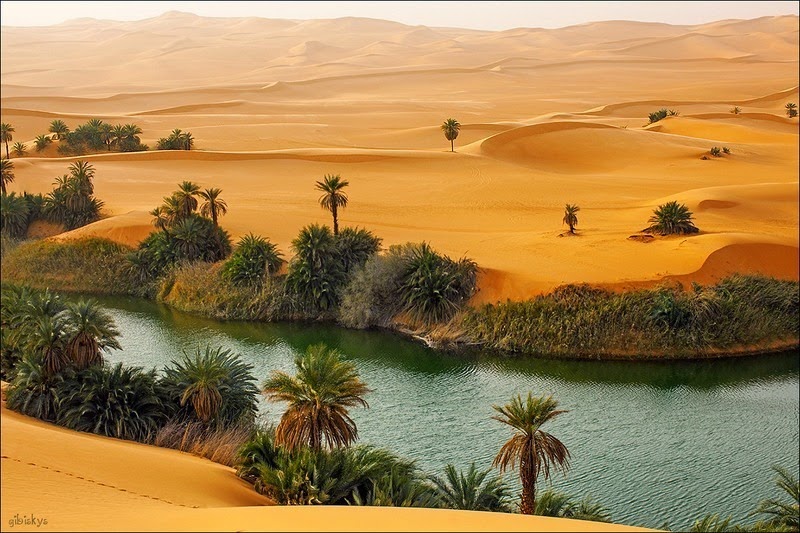
Oum al-Maa Lake, Ubari Sand Sea.
Among the most picturesque of the lakes are Gaberoun and Umm al-Maa (the Mother of Water). Located besides the ruins of the old village, Gaberoun is the one tourists mostly visit. There is a rudimentary tourist camp on the shore, including an open patio, sleeping huts, and a souvenir shop. There are two more beautiful lakes - Umm al-H'isan (the Mother of the Horse), also spelt as Oum El Hassan, located north of Gaberoun; and another one at Tarhouna, about 11km from Umm al-H'isan. These are, however, rarely visited by tourists.
The Ubari lakes are very salty. This is due to the fact that these lakes are being continuously evaporated and have no rivers replenishing them (Libya has no perennial rivers that persist year-round). This has caused the dissolved minerals in the lake waters to become concentrated. Some of these lakes are nearly five times saltier than seawater. Some take on blood-red hue from the presence of salt-tolerant algae.
Although the Ubari Lakes are not exactly shallow, ranging from 7 to 32 meters in depth, they are at the risk of drying out. The waters in Sahara’s underground aquifers, that were deposited tens of thousands of years ago in much wetter times, is limited and this is already declining thanks to the increasing use of aquifer water by growing human populations. About three decades ago the Libyan government undertook an ambitious project called Great Man-Made River, aimed at drawing water from the aquifers beneath the Fezzan region via a network of underground pipes to make the desert bloom. The project, if successful, will drain these enormous reserve of fresh water in just 50 to 100 years.

Oum al-Maa Lake.

Oum al-Maa Lake.

Oum al-Maa Lake.

Oum al-Maa Lake.

Oum al-Maa Lake.

Mandara lake, Libya.


Gaberoun Lake.

Gaberoun Lake.
 Gaberoun Lake
Gaberoun LakeSource
